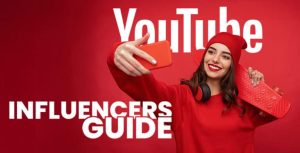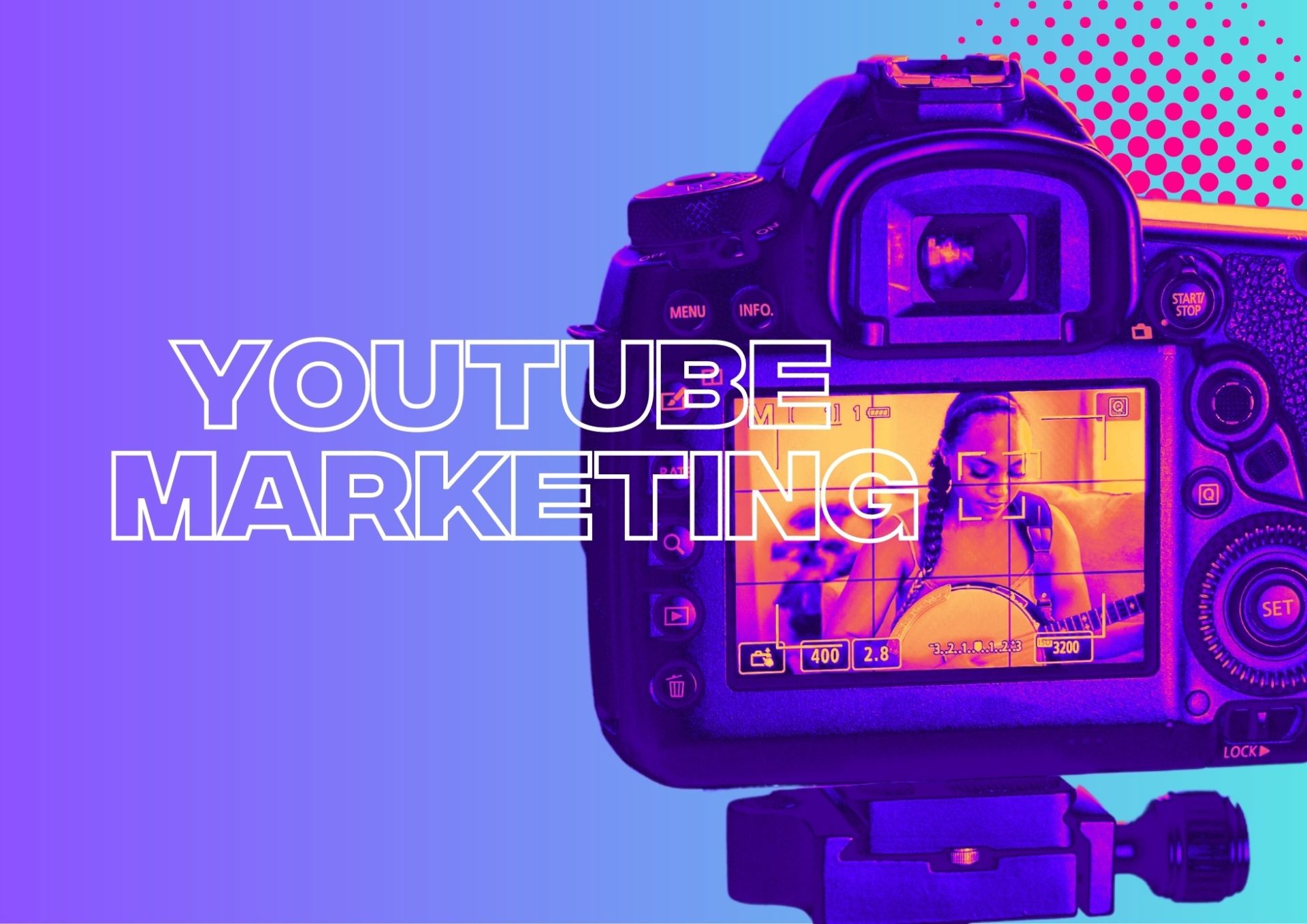Introduction
YouTube has become a powerful platform for brands to connect with audiences, and influencer marketing on YouTube is now one of the most effective ways to build brand awareness, increase sales, and grow a loyal customer base. In this guide, we will explore the key elements of YouTube influencer marketing, how to leverage it effectively, and why it’s such a vital part of modern marketing strategies.
What Is YouTube Influencer Marketing?

YouTube influencer marketing involves partnering with content creators (influencers) on YouTube who have established large and engaged audiences. These influencers promote your brand, product, or service in their videos, often through reviews, tutorials, or personal endorsements. The power of influencer marketing lies in the trust these influencers have built with their followers, which can lead to higher engagement and conversions for brands.
How Does YouTube Influencer Marketing Work?
YouTube influencer marketing works by connecting brands with influencers who already have a strong following on the platform. These influencers create content that promotes a brand’s product or service, usually in the form of reviews, tutorials, or mentions. Because their followers trust them, the promotion feels more authentic and relatable. This personal connection helps brands reach potential customers in a way traditional ads cannot.
Understanding YouTube Influencer Marketing

YouTube Influencer Marketing involves collaborating with content creators, known as influencers, who have established credibility and a dedicated following on the platform. These influencers create content that resonates with their audience, making them ideal partners for brands looking to promote products or services in an authentic and engaging manner.
Types of YouTube Influencers

YouTube influencers come in various categories, and understanding their differences is crucial to choosing the right partner for your brand:
- Mega-influencers: These are influencers with over 1 million subscribers. Their reach is vast, but they often charge higher fees.
- Macro-influencers: Typically, influencers with 100K–1 million subscribers, providing substantial reach with slightly lower costs.
- Micro-influencers: With 10K–100K subscribers, they have smaller but highly engaged audiences, making them effective for niche markets.
- Nano-influencers: These influencers have fewer than 10K subscribers. They often have personal connections with their audience, fostering strong trust.
The Importance of Authenticity
Authenticity is one of the key reasons why YouTube influencer marketing is so effective. Viewers trust the influencers they follow, seeing them as regular people instead of celebrities or paid advertisers. When an influencer genuinely likes and recommends a product, it doesn’t feel forced or fake. This is why brands should work with influencers who truly align with their values and products.
Why Brands Should Invest in YouTube Influencer Marketing

YouTube is the second-largest search engine after Google, making it a prime platform for marketing efforts. Here’s why brands should consider investing in YouTube influencer marketing:
- Increased Authenticity: Consumers are more likely to trust recommendations from real people they follow rather than traditional advertisements.
- Higher Engagement: YouTube influencers often create interactive content that encourages audience participation, increasing engagement rates.
- Targeted Audiences: Partnering with influencers allows brands to reach specific demographics more effectively.
- Better Conversion Rates: YouTube influencer marketing is proven to generate higher conversion rates because the influencers are perceived as genuine and relatable.
- Cost-Effective: Compared to traditional advertising, working with YouTube influencers can offer a better return on investment (ROI).
How to Choose the Right YouTube Influencer

Choosing the right YouTube influencer is crucial to the success of your campaign. Here are steps to follow:
1. Define Your Goals
Before selecting an influencer, establish your campaign objectives. Are you looking to increase brand awareness, drive sales, or boost engagement? This will guide your influencer selection process.
2. Research Your Audience
Understand the demographics of both your brand and the influencer’s audience. Ensure there’s alignment between the two, so the content resonates with the viewers.
3. Analyze Influencer Engagement
It’s not just about the number of followers; engagement is key. Check the influencer’s comments, likes, and shares to ensure they have an active and invested audience.
4. Consider Their Content Style
Does the influencer’s content match your brand’s values and tone? Consistency in messaging is essential for a successful collaboration.
5. Evaluate Past Collaborations
Look into any previous brand partnerships to see how well they performed. This can give you insights into their potential effectiveness for your campaign.
The Cost of YouTube Influencer Marketing
The cost of working with YouTube influencers can vary a lot. Influencers with millions of followers (mega-influencers) charge more, while smaller influencers (micro- and nano-influencers) are more affordable. But even though mega-influencers reach a bigger audience, smaller influencers often have better engagement because their followers trust them more. This makes working with micro- or nano-influencers a cost-effective option for many brands.
Best Practices for YouTube Influencer Campaigns

1. Allow Creative Freedom
Influencers know their audience best, so give them the creative freedom to present your product in an authentic way. This will lead to more organic engagement and trust from viewers.
2. Create a Clear Contract
Define expectations regarding deliverables, deadlines, and compensation. Ensure everything is clearly stated in a written agreement to avoid misunderstandings.
3. Track and Measure Success
Use analytics tools to track key metrics such as views, engagement rates, click-through rates (CTR), and conversions. Regularly measure the success of your campaign to optimize future efforts.
4. Develop Long-Term Relationships
One-off collaborations may work, but long-term partnerships with influencers can build deeper relationships with their audience, improving trust and brand loyalty.
Creating a Successful YouTube Influencer Campaign
A successful YouTube influencer campaign starts with clear goals. Whether you want more brand awareness, sales, or engagement, knowing what you want helps you find the right influencer. Next, it’s important to give influencers creative freedom. Let them talk about your product in their own style. This keeps the content natural and engaging for their viewers. Finally, tracking the success of the campaign using key metrics like views, clicks, and sales is essential to understand what worked and what didn’t.
Challenges of YouTube Influencer Marketing

Like any marketing strategy, YouTube influencer marketing comes with its own set of challenges:
- Cost: Influencers with large followings often charge premium prices for their services, which can strain marketing budgets.
- FTC Guidelines: Brands and influencers need to comply with disclosure rules, clearly indicating when content is sponsored. Failing to do so can lead to legal consequences.
- Tracking ROI: Accurately measuring the return on investment can be tricky, especially if there’s no direct link between influencer promotion and sales.
How to Create Effective Influencer Content

Once you choose the right influencer, the next step is to create effective content together. Here are some tips:
1. Align Your Message
Make sure the influencer understands your brand message clearly. This ensures the content they create reflects your values and goals. A clear message will resonate better with the audience.
2. Choose the Right Format
Discuss different content formats like product reviews, unboxing videos, or how-to tutorials. The format should match both your goals and the influencer’s style. For example, tutorials can show how to use a product effectively.
3. Keep It Engaging
Encourage influencers to keep their content fun and engaging. Viewers enjoy videos that entertain while delivering useful information. Creative storytelling can help grab attention and keep viewers watching.
4. Use Strong Calls-to-Action
Have influencers include clear calls-to-action in their videos. This can direct viewers to visit your website, use a discount code, or follow your social media accounts. Effective CTAs can help drive audience action.
5. Plan for Feedback
After the campaign, be open to feedback from the influencer. This can help you learn what worked well and what didn’t. Understanding their experience can improve future collaborations.
The Future of YouTube Influencer Marketing

The future of YouTube influencer marketing looks bright as more brands see the value of partnering with influencers. With the rise of niche influencers, even small businesses can find affordable ways to reach their target audience. As YouTube continues to grow, influencer marketing will likely become an even bigger part of brand strategies, offering new opportunities for creativity and engagement.
YouTube influencer marketing continues to grow and change. As more brands realize its value, the market is becoming more competitive. Here are some trends to watch for:
- Increased Focus on Authenticity: Audiences are seeking genuine content. Brands will need to partner with influencers who share their values and can create real connections with their viewers.
- Shorter Videos: With the rise of platforms like TikTok, short-form videos are becoming popular on YouTube as well. Brands should consider working with influencers who can create engaging content in shorter formats.
- Live Streaming: Live streaming on YouTube is gaining popularity. Brands may use influencers to host live events, allowing real-time interaction with audiences and creating a sense of urgency.
- Diversification of Content: Influencers are exploring new types of content. Brands should stay flexible and open to different ideas and formats that influencers bring to the table.
- Greater Analytics Tools: New tools are emerging to help brands measure the success of influencer campaigns better. Utilizing these tools will allow brands to refine their strategies for even better results.
Comparative Table: Types of YouTube Influencers
| Type of Influencer | Number of Followers | Reach | Cost | Engagement | Best For |
|---|---|---|---|---|---|
| Mega-influencers | 1M+ | Very High | Very Expensive | Medium | Large-scale awareness campaigns |
| Macro-influencers | 100K–1M | High | Expensive | High | Brand building and increased awareness |
| Micro-influencers | 10K–100K | Moderate | Affordable | Very High | Niche markets and higher engagement |
| Nano-influencers | <10K | Limited | Low | Extremely High | Highly targeted and local campaigns |
Analysis Table: Benefits and Challenges of YouTube Influencer Marketing
| Factor | Benefit | Challenge |
|---|---|---|
| Authenticity | Builds trust with audiences | Ensuring influencers align with brand |
| Cost-Effective | Lower cost compared to traditional ads | High fees for top-tier influencers |
| Engagement | Higher engagement with interactive content | Difficult to maintain long-term engagement |
| Targeted Reach | Reaches specific audiences easily | Finding the right influencer match |
| ROI Measurement | Better ROI when tracked accurately | Hard to track direct conversions |
| Brand Awareness | Rapid growth in brand visibility | Short-term campaigns may not sustain long-term awareness |
Conclusion
YouTube influencer marketing offers immense opportunities for brands looking to expand their reach and engage with targeted audiences. By partnering with the right influencers, companies can build trust, increase brand awareness, and boost conversions. However, it’s important to approach influencer marketing strategically carefully selecting influencers, giving them creative freedom, and tracking the campaign’s success will lead to the best outcomes.




